story
In the backstage of the Neighborhood
'The Days of Marvila' take place from October 5 to 16
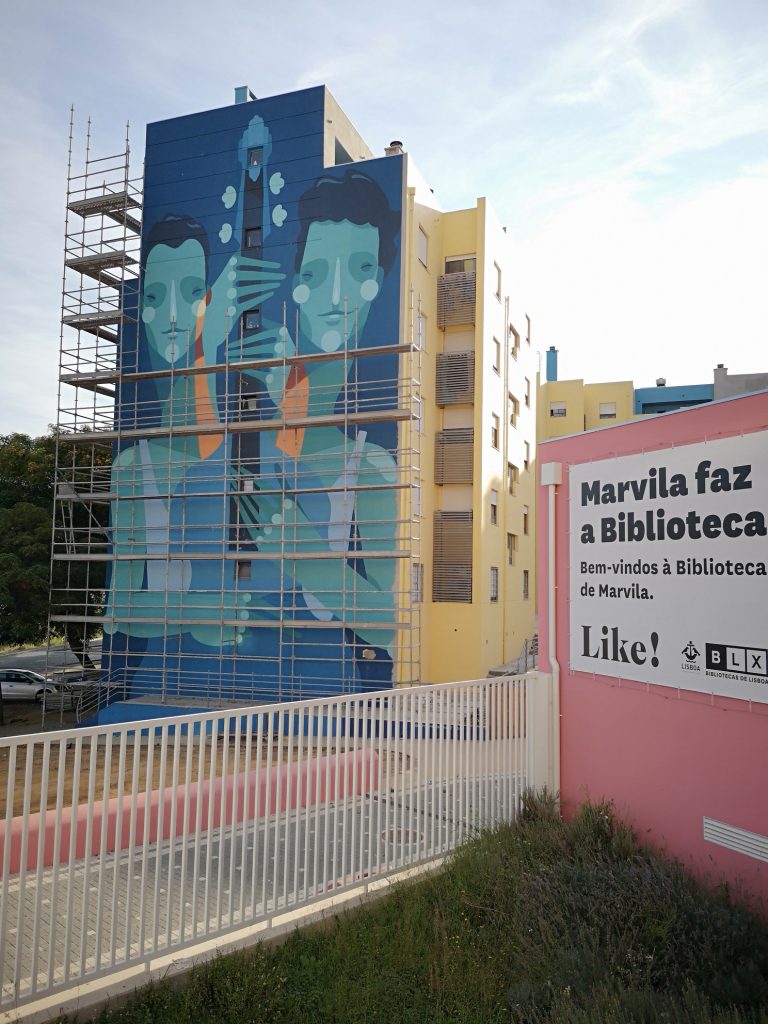
For the second consecutive year, Biblioteca de Marvila promotes a festival of performing arts that, having these modern municipal facilities as an epicenter, is a challenge to open the parish to the whole city - a parish that until very recently was in the news because of its social housing neighborhoods, the urban degradation and the low levels of literacy and employment of its residents. Today, much is changing in this vast territory to the east, which begins next to the river, comprises a dozen neighborhoods and is almost next to the Airport. If Poço do Bispo, in the Marvila Velha area, boils with new cultural and business projects, and problems common to almost the entire city, such as the phenomenon of "gentrification," begin to be mentioned, beyond the railway line, another city still seems to exist. The one we met through a trip backstage to some projects that will be part of Os Dias de Marvila.
In the central zone of Lisbon, on the platform of the Roma / Areeiro station, the suburban train is arriving coming from Alcântara-Mar to Castanheira do Ribatejo.. Without undue delays, we enter the train, knowing that in just under a quarter of an hour we will be sitting in the comfortable lobby of Biblioteca de Marvila talking to some of the local Visionaries.
Gently sliding down the rails, the train seems to carry us out of the city through vacant lots, entanglements of freeways and overpasses that cross the track and narrow nests that lead to small vegetable gardens. As expected, in six minutes, we disembarked at the station of Marvila. A few meters to the north, without particular ostentation, but very visible, is our first destination: the Biblioteca de Marvila.
Living the programmer’s insomnia
Due to personal availabilities, only four of the 12 Visionaries of Marvila answered our call. And it is with enthusiasm that they share the experience, in this edition of Os Dias de Marvila (The Days of Marvila), of being in the role of programmers of two of the shows to be exhibited at the festival – 1.5º Ponto de Equilíbrio, from Companhia Erva Daninha, and the quartet concert DG4.
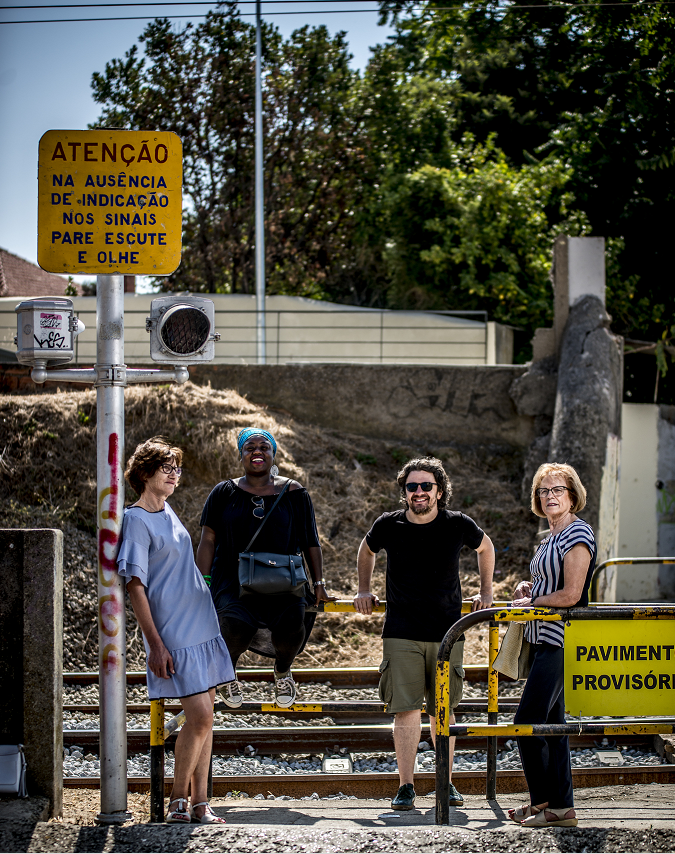
To be a visionary is precisely to play the role of programmer. The project Visionários, promoted in several municipalities by ArteemRede, allows the viewing of different shows and artistic creations to a group of people who evaluate them and will select them for future public exhibition. However, it is not enough to like – you have to check the availability of the artists, the available budget and many other aspects that, as a rule, give many sleepless nights to a professional programmer. Cila, Dina, Rui and Eunice, visionaries from Marvila, speak up! After having seen a roll of projects in loco and in video, the group, “very heterogeneous in terms of ages and life paths,” decided and it is now up to the public to evaluate their choices.
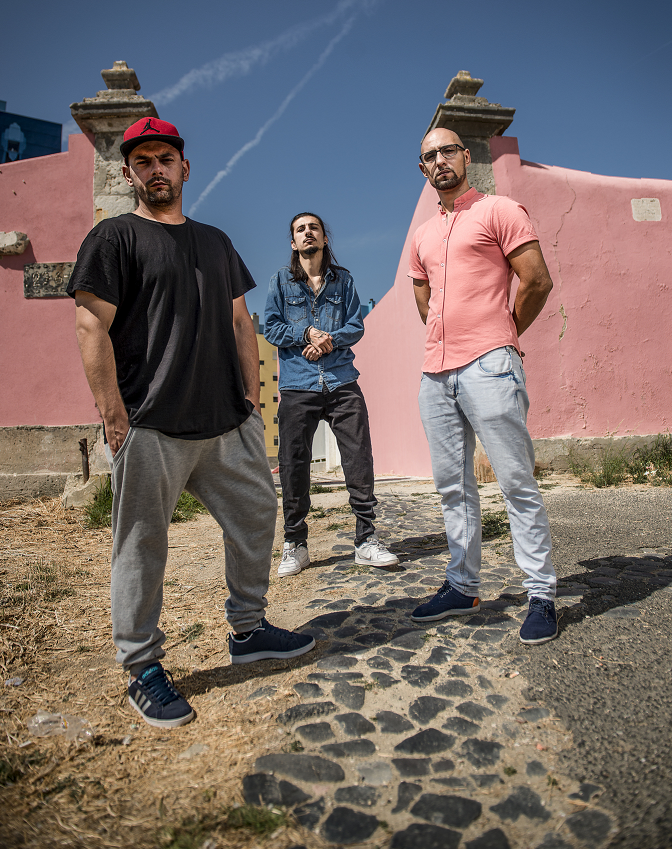
“All the punches I took were because of rap“
The reunion of old friends that the love for music, namely rap, brought together. Seated in front of us, after a photo session under a blazing sun, Viruz, Myslo and Rato Chinês joined us and quickly began to share stories that seem to come out of the songs they sing. Of the three, Rato Chinês is the only Marvilense (Viruz and his producer and DJ, Myslo, come from Campolide) and his artist name is very symptomatic of what is, but also was, the neighborhood where the library is installed nowadays. “Rato is my nickname since I was a kid. That is how, here in Chelas [name already removed from the toponímia of Lisbon, but still widely used by locals], everyone knows me. The Chinês (Chinese) is from the time when this place was almost just tents and the road was a dirt track: the Chinatown.”
Viruz and Rato met in the 90’s, in Bairro Alto, and together they were doing freestyle rap in the street, echoing the admiration they had “for the poems and the beat which they heard from the older students in the hallways of their school.” They speak of a golden period, between 2001 and 2004, in which the duo was very successful in the lively neighborhood of the capital. However, life took them down to different paths: Viruz has a well-established career in national rap and Rato is back in the art that made him take all the punches he remembers. And, in a way, it is a return that the Library sponsored: “I came in here a few months after opening, and asked for a studio. There were none, but the doors of an auditorium were opened to me.” In fact, this experience leads the trio to underline the importance of ending mutual mistrust and prejudice between the residents of the area and those who come from the outside: “and as artists, it is up to us to be mediators of these realities,” they emphasized.
Cultivate self-esteem in those who need it so much
We now cross the train track towards the Marvila Road, turning our backs to Chelas. In Azinhaga das Veigas, an old palace houses Casa de São Vicente, an association currently dedicated to the rehabilitation of people with disabilities, founded in 1940 by the Countess of Mafra, Maria Antónia de Mello Breyner. Here, Suzana Rodrigues works with some people of this IPSS in the exhibition A nossa cara não é estranha (Our face is not strange), which will be featured in Biblioteca de Marvila during the festival.
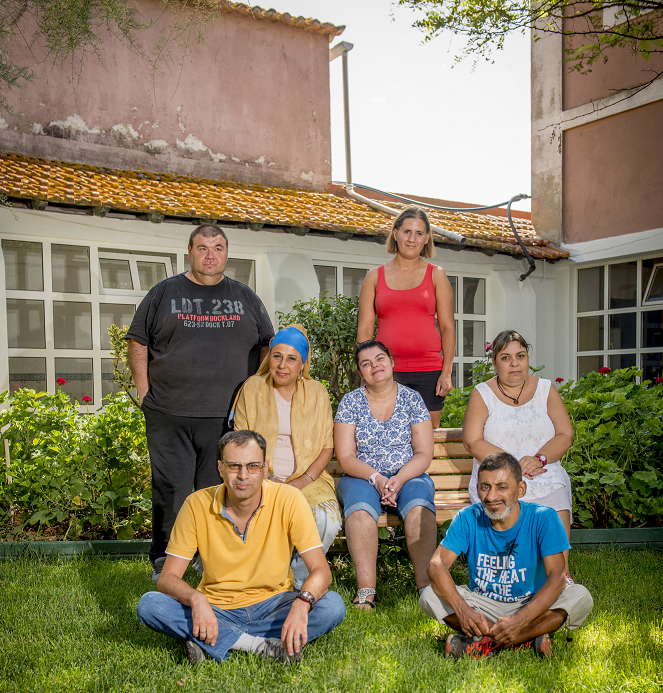
The exhibition consists of recording, through photography, images that are particularly familiar to all audiences, using the young as models and the not so young people of this House. Suzana gives us an example, showing the famous painting by Johannes Vermeer on the computer The Girl With a Pearl Earring. Then she shows a picture of the model, a female student and member of the institution, reproducing the beautiful painting, and asks us: “Isn’t she beautiful? Can you see that she’s a woman with a cognitive impairment?”
The purpose of this exhibition will be precisely to show everyone how “these people are special, that this is their other face” and at the same time to make the confidence level of these “very special people” grow. When they see themselves on these photographs, their “self-esteem can only rise.” On the other hand, a public moment of this magnitude will provide an additional motivation for many of the families to come back to meet their own. Many of the students in the House live at the institution (there are 25 females in the Home) and they have little or no contact with their families.
At the farewell, the technical director of Casa de São Vicente, Cristina Gomes, leaves us a wish: “We want to be more and more included in the city, but the city has to include us. We have lots of ideas to share.” This exhibition is surely one of them.
“A site divided into zones with letters of the alphabet”
We now head east to the apogee zone of Marvila Velha, where everything seems to be changing at an amazing pace. With the river in full view, we enter the “One Your First Stop complex”, a former railway warehouse, now occupied by creative industries and co working. Here we find the director and performer Tiago Vieira, born and raised in Marvila, and Patrícia Carreira, director and member of the Companhia Cepa Torta, accompanied by young people from her community theater project. This project involves students from the parish schools and the neighborhood community of Marvila Velha, Lóios and PRODAC. Both will present two creations in Os Dias de Marvila.
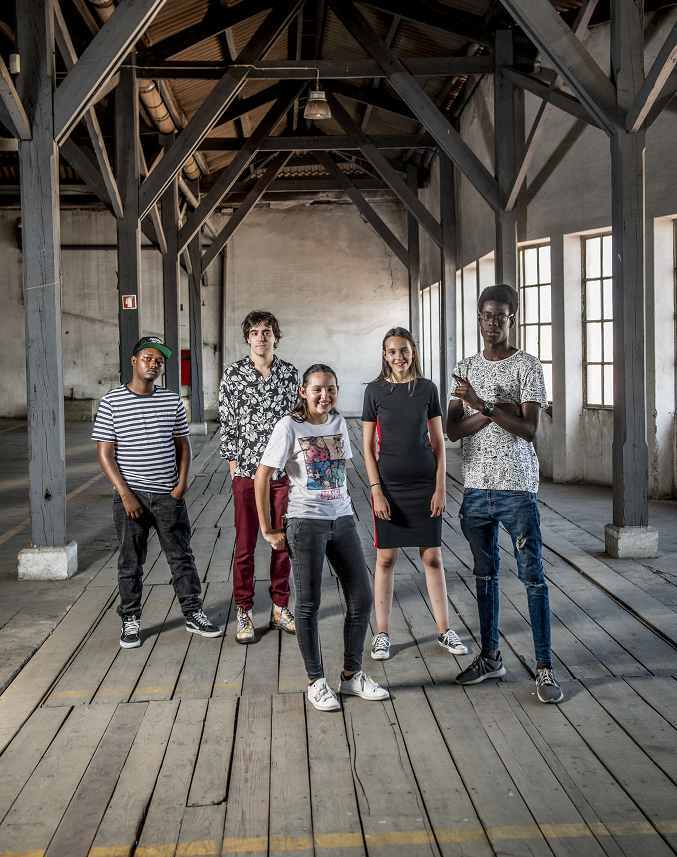
Already famous in the Portuguese theater, Tiago is the co-founder of Latoaria, in Mouraria. “I would not stage and create the way I do if I had not been born and raised in Chelas,” he explains, before going into the concept of A Pátria é a minha Revolução (The Homeland is my Revolution), a show he is organizing with a cast of actors and professional dancers, and that will be presented in one of the warehouses of the complex where we are at. For what he calls the “apocalyptic concert,” Tiago will seek out authors who marked him, such as Ortega Y Gasset, Nietzsche, Genet, Rimbaud, but also Sam The Kid, the rapper who, just like him, was born and raised in the neighborhood and sang Chelas, “place divided into zones with letters of the alphabet.” “It is a tribute to the people who marked me in Chelas, a poetic interpretation of the memories I keep, of that almost Chekhovian boredom of hot days that brought scents from the distant lands of Africa. Because in Chelas, especially in Zona J, we can still breathe deep African environments. And I do not conceive my neighborhood memories without them.”
Lara, one of the young women who participate in the Cepa Torta project, the O Mapa do Mundo Reinventado (The Reinvented World Map), intervenes: “But it’s not only Africans! My family came here from the north. They lived in a tent, there was a vegetable garden. Then there was the rehousing. And those who don’t live here continue to look at us with suspicion. Of course there is poverty, but I think that people see Chelas as worse than it really is when we talk about bad things.”
How about today? What has changed? None of the young people who are present is quite sure, but Tiago concludes: “To have a library in Chelas is something incredible…”
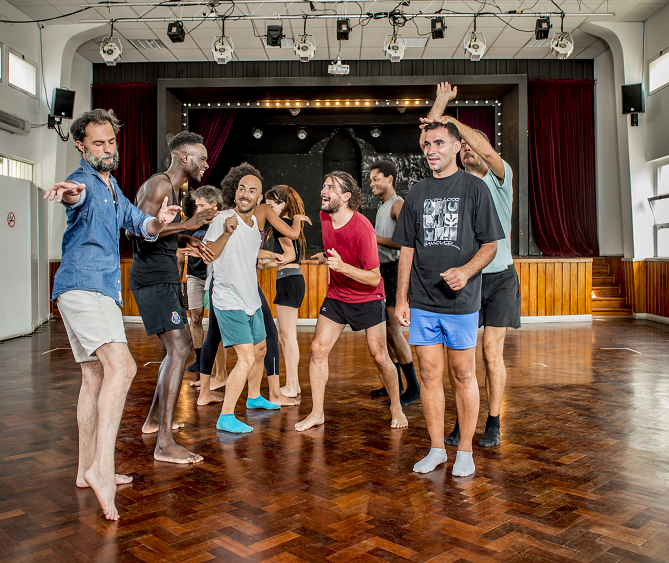
The last slow in Marvila
Our next destination is the Party Hall of Vale Fundão, there we meet Rui Catalão, who is rehearsing O Último Slow (The Last Slow), a show that will have two presentations in Os Dias de Marvila (although one of them will be in the Torreão Poente do Terreiro do Paço). This is a return to this territory after about two years ago, at the invitation of the Teatro Municipal Maria Matos, he created Assembleia (Assembly), a spectacle carried out by Marvilenses from two different neighborhoods: Alfinates and Armador.
“For this project, I started auditioning at Biblioteca de Marvila, where 70 people were present. Unfortunately, none, except David, who is with us, has become engaged.”
It will be David, a neighborhood youth with some cognitive limitations, who will act as a touchstone in this new creation. “It is a dance theater show, made of dramatic movement without words,” from slows, “this fashion in loss,” these songs that are part of each one of us when we are growing.
In the scene, Rui joins professional and amateur performers (some who come from creative projects he did in Vale da Amoreira), and regrets that in Marvila “it is still difficult to call in the community.” In fact, the director points out how much there is to do on the ground for people to mobilize. This is an aspect pointed out by many of the people with whom we talked. From local residents to other agents, all realize that only the persistence of social and cultural projects can definitively end the “hidden city” that one day was called Chelas.
The radiant future is the children
It could be some sort of epilogue to this trip, but we believe it to be the beginning of everything.
With the day ending, we return to the Library to discover another project that has, in that space, a house. This is the Children’s Choir of the Biblioteca de Marvila, and now that the school days are over, some young stars can pose for the photograph.
Conducted by the conductor Catarina Braga, the Choir, also sponsored at its genesis by the Teatro Municipal Maria Matos, is preparing for another year of work, still without certainty as to the number of children who will integrate it. “Last year we had 11, 12 children coming regularly to rehearsals,” says Catarina. And curiously, they come from all over the parish, so they constitute a very heterogeneous group in terms of social stratum. Although very challenging, it is a small achievement, and as a mother comments, it is “a project that is exposing the neighborhood very positively, demonstrating that things are happening here.”
One concrete example of inclusion was the participation of some Roma children. “Not being regulars, we managed to convince them to come, and we hope they do not give up. It would be very important for them,” emphasizes the teacher.
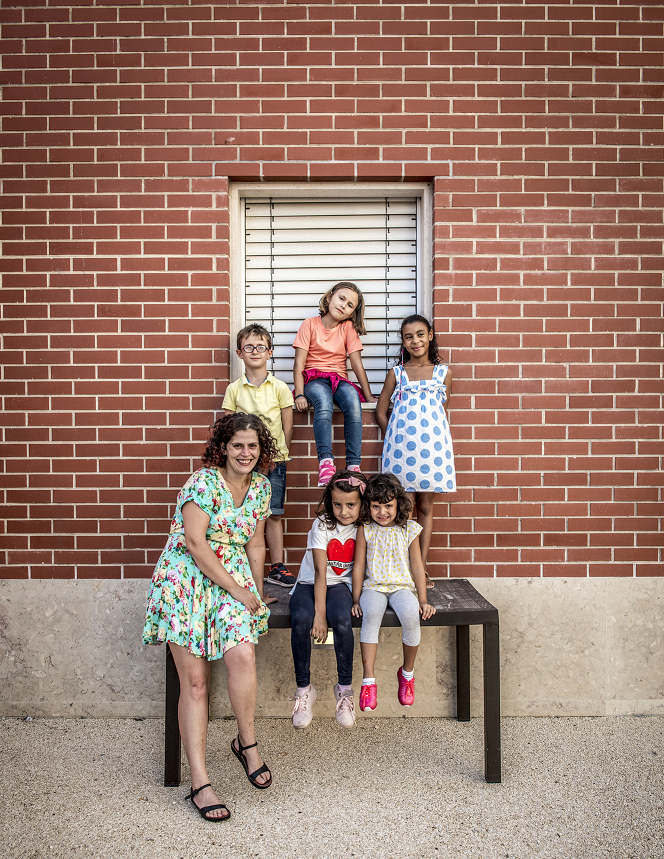
Now is the time to raise voices and start preparing the presentation planned for Os Dias de Marvila. And we had a small sample of: Cancioneiro da Bicharada by Carlos Gomes, the children present interpreted O Grilo, from a poem by Alexandre O’Neill, with choreography too.
In the future, Catarina wants to put the choir singing Marvila and, for that, has already begun a search for the repertoire of the parish, rich mainly in songs from the “marchas.”
The sun is setting and it is time to leave this side of the city. Towards the threshold, the eternally hopeful voices of the children are still heard. After all, it is with them that one begins to construct the future of the city. And the words we heard from rapper Rato Chinês a few hours ago come to mind – “In my time, we believed that there were only two ways out of the neighborhood: football or fight!”
Maybe, now or in the near future, other ways will open up.